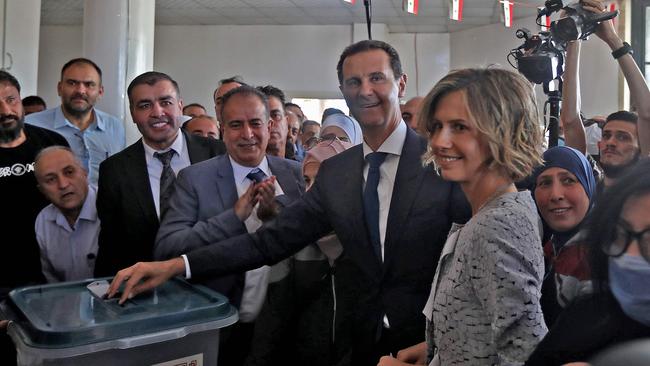Rise from London ‘IT geek’ to brutal dictator
The Syrian despot took an interest in politics only after his older brother died in a car crash, but his two decades of brutal rule may be nearing their end

Bashar al-Assad, 59, is the third of five children of Hafez al-Assad, a member of Syria’s minority Alawite sect who become the nation’s leader in 1971 after ruthlessly rising up the ranks of the Baath Party.
Assad initially held no political ambitions and studied medicine at Damascus University before moving to Britain in the early 1990s to specialise in ophthalmology at the Western Eye Hospital in London.
Contemporaries described him as the “geeky IT guy”.
When his older brother Bassel died in a car accident in 1994, Assad was summoned back to Syria to replace him as heir apparent to the presidency.
He came to power in July 2000 after the death of his father. Within months, he married his British-born wife, Asma Akhras, now 49, whose parents were family friends.
The daughter of a cardiologist at the privately run Cromwell Hospital in South Kensington, Akhras grew up in Acton, west London. She studied at King’s College London before starting a career in investment banking, including a stint at JPMorgan.
She was raised as a Sunni Muslim. The couple has three children, who are believed to hold dual Syrian-British nationality.

Western leaders initially feted Assad and his glamorous wife as potential reformers in the Middle East. In 2002, the couple was invited on a state visit to Britain, where they were hosted by Queen Elizabeth and the future King Charles. They also attended a lunch with Tony Blair at Downing Street.
Official papers later obtained by The Sunday Times under Freedom of Information rules revealed Assad had wanted “as much pomp and ceremony as possible” during the trip, and that Blair’s government had considered asking the Queen to bestow an honorary knighthood on the Syrian dictator.
Anger at Assad’s autocratic rule – which involved many extended family members lining their pockets with state contracts – spilt over into large-scale pro-democracy protests in March 2011 as the Arab Spring took hold across the Middle East.
In the face of a crackdown on dissent, in which tens of thousands of Syrians were killed or imprisoned, the nation spiralled into a full-blown civil war involving various factions, including Islamist groups linked to al-Qa’ida.
Some would later morph into Islamic State, the jihadist group founded by Abu Bakr al-Baghdadi, to which hundreds of British jihadists flocked.

On February 22, 2012, Marie Colvin, the award-winning Sunday Times foreign correspondent, was killed in a targeted attack by Assad’s forces besieging the rebel-controlled city of Homs.
Remi Ochlik, a French photojournalist, also died during the bombing of a makeshift media centre, and Paul Conroy, a British photographer working with Colvin, 56, was seriously wounded.
Assad has also deployed chemical weapons, notably in Ghouta, on the outskirts of Damascus, in August 2013, when rockets carrying sarin gas killed at least 350 people, according to British intelligence.
By 2019, Assad had regained control of much of Syria with the military support of his two key backers, President Vldimir Putin of Russia and Ayatollah Ali Khamenei, the supreme leader of Iran.
With Russia mired in the Ukrainian war, and Iran and its proxies, Hezbollah and Hamas, under pressure from Israel, that backing has been on the wane.
It has allowed the Islamist group Hayat Tahrir al-Sham, which is proscribed by the Home Office as an offshoot of al-Qa’ida, to launch an offensive from its stronghold in Idlib, northwest Syria.
As the rebels closed in on Damascus, the Syrian government sought to deny reports Assad and his family had fled.
The Times



To join the conversation, please log in. Don't have an account? Register
Join the conversation, you are commenting as Logout